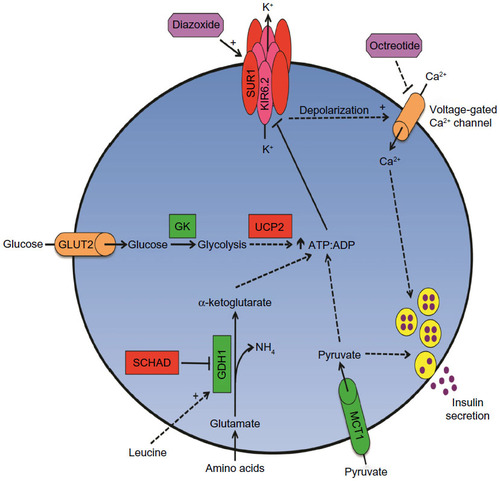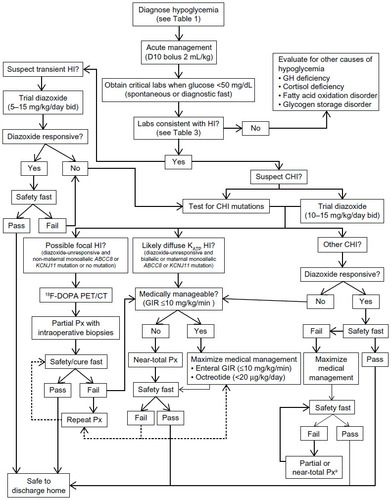Figures & data
Table 1 Whipple’s triad of hypoglycemia
Table 2 Diagnostic fasting evaluation of hypoglycemia
Table 3 Laboratory findings consistent with HI
Table 4 Types of fasting studies
Table 5 Genetic causes of CHI
Figure 1 Multiple genetic mutations affect beta-cell insulin secretion in CHI.
Notes: Proteins with activating mutations that cause CHI are in ![]()

Table 6 Medical management of HI
Table 7 Recommended screening for chronic complications
Figure 2 Diagnostic and management algorithm for HI.
Abbreviations: HI, hyperinsulinism; GH, growth hormone; bid, twice daily; CHI, congenital hyperinsulinism; 18F-DOPA PET/CT, 18fluoro-l-dihydroxyphenylalanine positron emission tomography and computed tomography; GIR, glucose infusion rate; Px, pancreatectomy.

